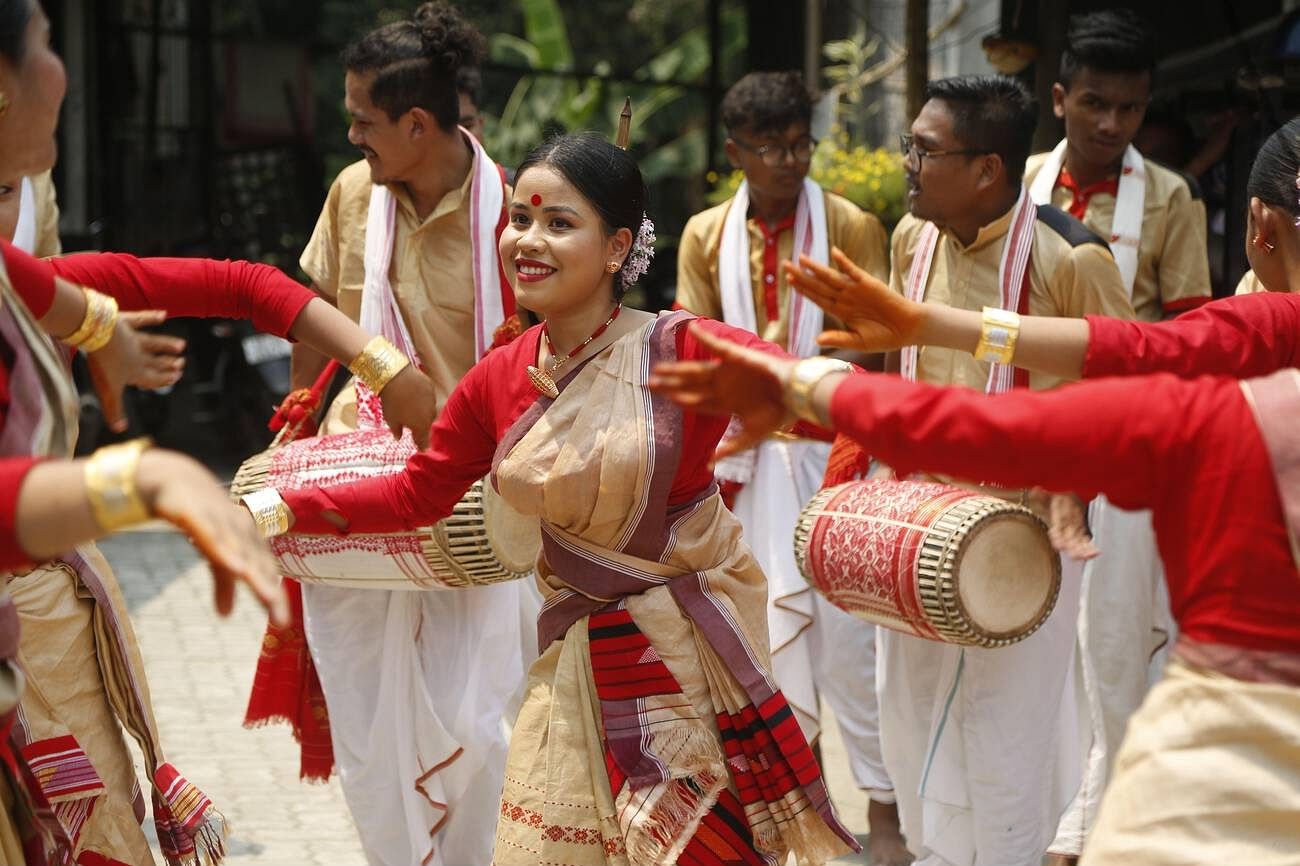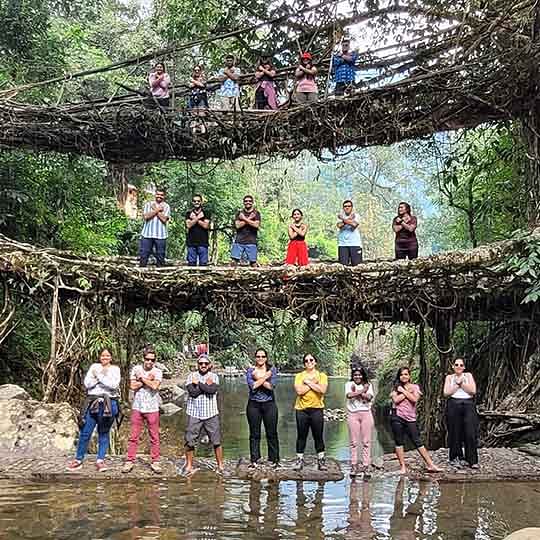Bohag Bihu (also called Rongoli Bihu) is the most important festival for Assamese people. This celebration marks the start of the harvest season and the first day of the Hindu solar calendar.
Farmers give thanks for their successful harvests and pray for good crops in the coming year.
Assamese people celebrate Bihu three times yearly, with each celebration matching a different farming cycle: Bhogali Bihu, Bohag Bihu, Kongali Bihu.
Bohag Bihu happens around the same time as other harvest festivals in India, including the Baisakhi festival, Vishu, and Tamil New Year. This special festival brings communities together through traditional music, dance, feasting, and prayers. Bohag Bihu 2025 in Assam is falling on 14th April and lasts till a week!
- Bohag Bihu 2025 In Assam Date: 14 April 2025 to 20 April 2025
- Assamese Bihu or Rongali Bihu is one of the best festivals in Assam. It is an ancient festival that began as a spring celebration among farmers and local tribes.
- "Rongali" means joy and celebration. This shows how important happiness is during this festival. All three Bihu festivals in Assam focus on harvesting crops.
- It is believed that Bihu started before the Aryan people came to India. It celebrates the earth's ability to grow food.
- The Ahom kings, who ruled Assam for nearly 600 years, embraced Bihu because they understood its importance for farming success.
- Over time, the Bihu festival has changed a bit as different groups came to Assam, but it has always kept its special Assamese character.
Celebrating 7 Days Of Bohag Bihu Festival
The Rongali Bihu festival lasts for 7 days, starting with Chat Sankranti and continuing for six days of the Bohag month. Each day has its own special name and purpose:
- Goru Bihu (Cow Day): People bathe their cows and throw a mixture of garlic, eggplant, turmeric, and carrots on them while saying, "Eat garlic, eat eggplant, grow year by year." In the evening, cows are decorated with makhiyati leaves, fed special rice cakes (pitha), and tied with new ropes.
- Manuh Bihu (People Day): On this day of Bohag, everyone washes their feet. Younger people show respect to elders and receive blessings. Everyone wears new clothes and exchanges Bihu gifts.
- Gosai Bihu (God Day): The third day is for praising God and wishing everyone a good year ahead.
- Tatar Bihu (Weaving Day): Weavers clean and organize their weaving tools, preparing to plant crops instead.
- Nangal Bihu (Farming Day): The fifth day focuses on agriculture and its importance.
- Chenehi or Jiyari Bihu (Daughter Day): Married daughters return to their parents' homes on this day.
- Chera Bihu (Feast Day): People enjoy special meals with rice, many side dishes, and numerous vegetables.
During Bohag Bihu, people sing Huchari songs, going from house to house to wish others well. In some areas, Huchari singing continues throughout the month.
Suggested Read: Discover The Best Places To See In Assam: Top 10 List
On Assamese New Year, people get up before sunrise to bathe using a special mix of raw turmeric and urad dal paste on their skin.
After bathing, everyone puts on new clothes and goes to their elders to receive blessings for the coming year.
The first meal of the Assamese New Year is a light breakfast called "jalpan," which includes sticky rice served with sweet jaggery and curd.
- During the Assamese New Year, people gather together, cook special traditional foods, and light ceremonial fires called Meji. The Bihu festival brings everyone together, no matter who they are or what they do.
- Green leafy vegetables are important during Assamese Bihu as they show thanks for good crops and successful harvests.
- Other important foods for Assamese Bihu include jaggery, coconut, sesame, rice, milk, and different milk products.
- Some groups also make rice beer and cook many types of meat dishes for the Assamese New Year celebration.








